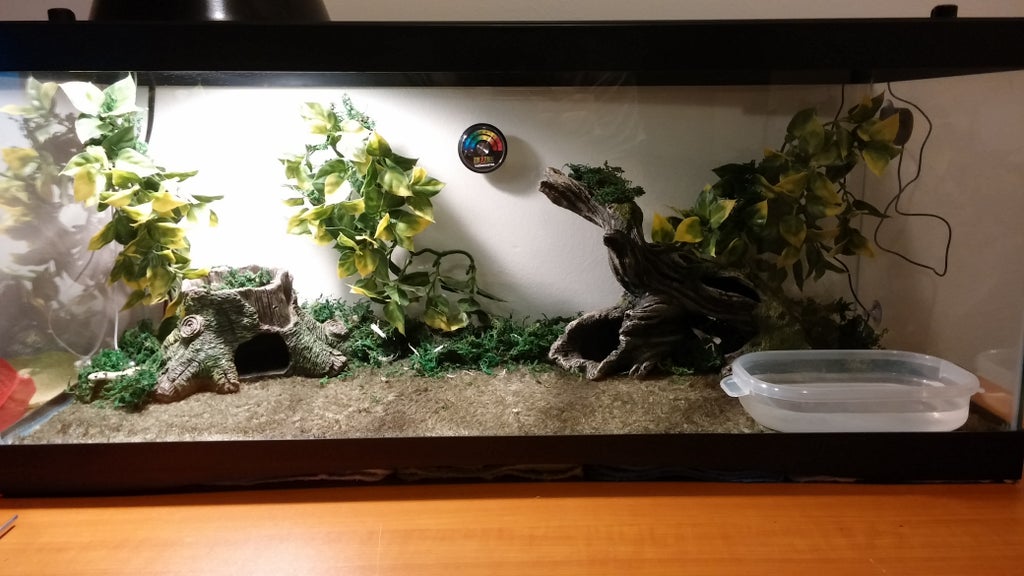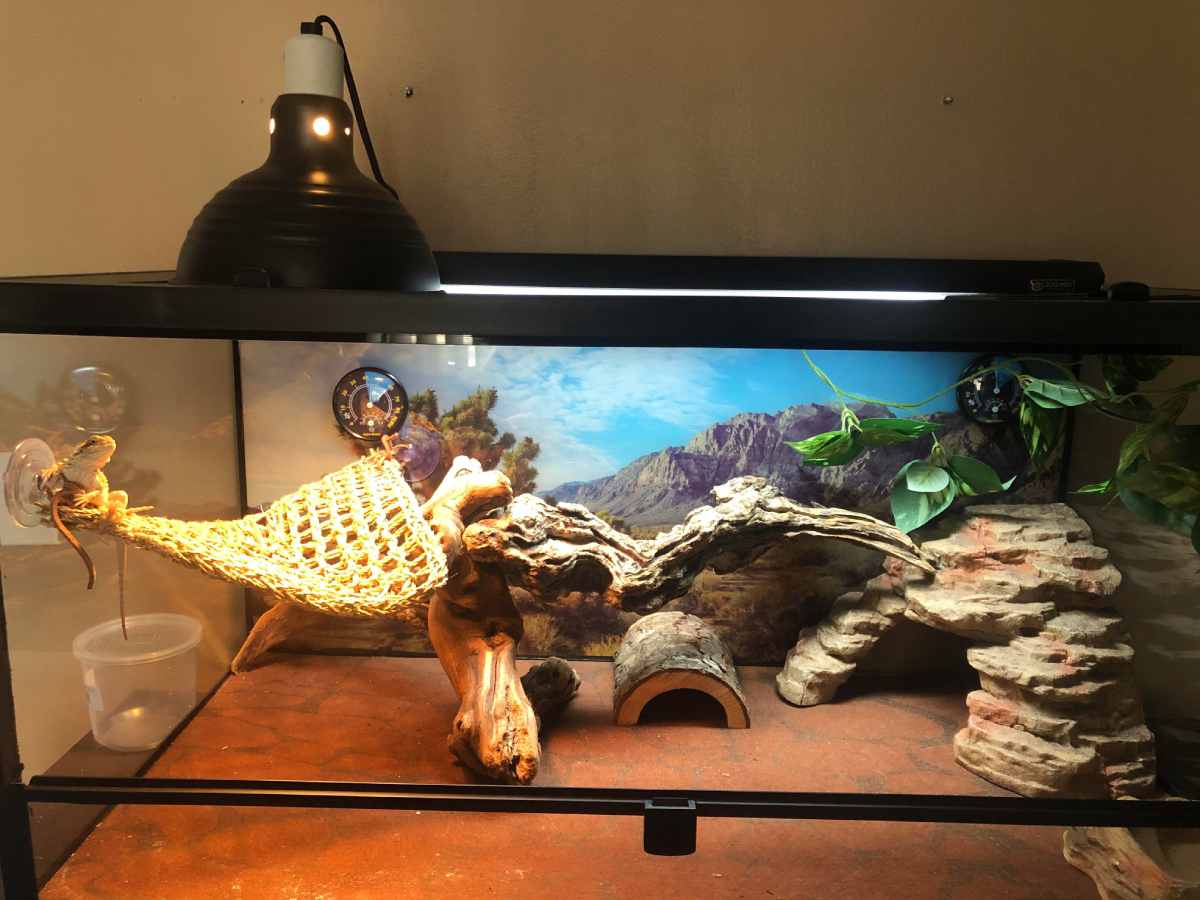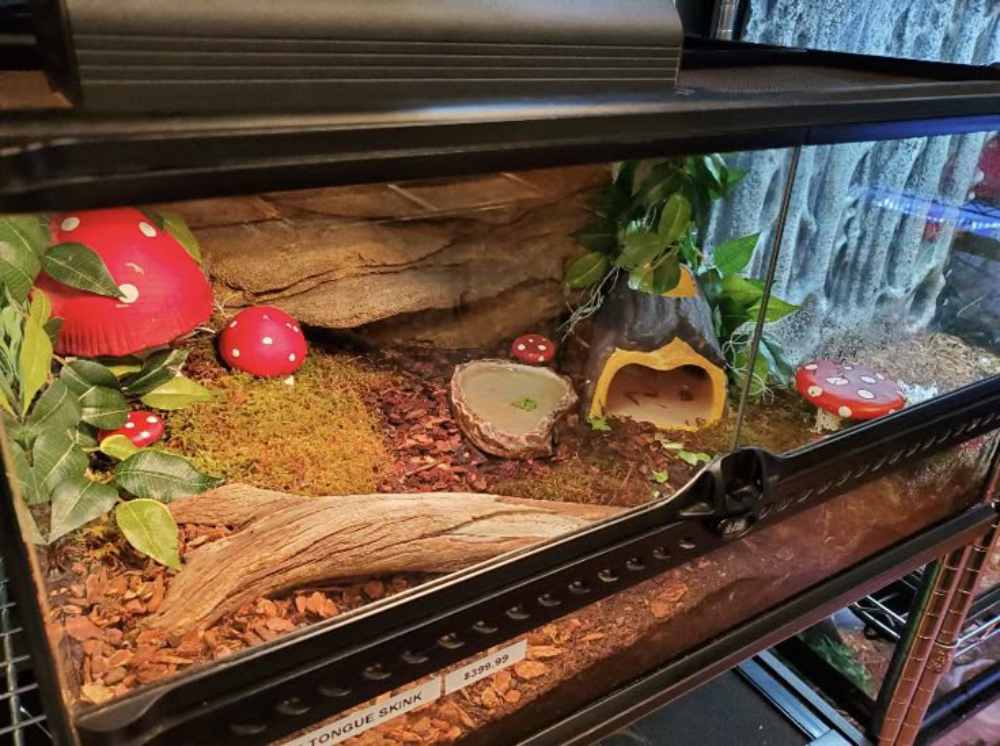
The Best Terrarium Setup for Reptiles: Creating the Perfect Reptile Habitat
Many are fascinated by reptiles and their unique characteristics and behaviours. From the brightcolourss of chameleons to the grandeur of iguanas, these animals bring extra love to homes. But these fascinating creatures have needs and living conditions that must be understood. Terrarium setup is an essential part of caring for reptiles. In this guide, we will cover how to create the best possible reptile habitat, including basic steps, common mistakes to avoid, and expert tips!
Why a Proper Reptile Terrarium Setup Matters

A suitable reptile habitat isn’t just about looks; it’s about mimicking the natural environment your pet would find in the wild. A well-designed terrarium supports your reptile’s health by providing the right temperature, humidity, and space. The proper setup can lower stress and prevent illnesses, leading to a happier, longer life for your pet.
The Importance of Replicating Natural Conditions
Reptiles are ectothermic, meaning they depend on external heat sources. In the wild, they bask in sunlight for warmth and find shade to cool off. Your terrarium should reflect these conditions, offering a temperature gradient and suitable lighting. Many reptiles also need specific humidity levels. If these needs are not met, it can lead to respiratory issues or skin problems.
Real-Life Applications
Take the leopard gecko, for example. In the wild, they live in dry areas with rocky ground. A leopard gecko’s terrarium should feature a warm basking spot, a more fabulous hiding area, and a substrate that resembles their natural home. In contrast, a tropical species like the green tree python needs a humid, forest-like environment with lots of vertical space for climbing.
Step-by-Step Guide to Creating the Best Reptile Terrarium
Setting up a reptile terrarium involves several steps, each vital for your pet’s comfort and health. Here’s a clear breakdown of the process.
Choosing the Right Tank
The first step is selecting the right tank for your reptile. The size and type depend on the species you want to house. For instance, a corn snake needs a long, horizontal tank. A veiled chameleon, on the other hand, requires a tall, vertical enclosure for climbing.
Material Considerations
Terrariums typically come in glass or plastic, but glass tanks offer excellent visibility and suit species needing high humidity. They can be heavy and fragile, though. Plastic enclosures are lighter and more durable but may not provide the same visibility. Choose the material based on your reptile’s needs and your preferences.
Setting Up the Substrate
The substrate is the base of your terrarium. It helps maintain humidity and gives a natural feel. Different reptiles need different substrates. Desert reptiles like bearded dragons do well with sand or a sand-soil mix. Tropical species like the crested gecko prefer coconut fibre or moss.
Avoiding Common Mistakes
Stay away from substrates that can cause impaction if ingested, like gravel or wood chips. Impaction is a serious condition where the digestive tract gets blocked, leading to severe health issues. Always research the best substrate for your reptile species.
Temperature and Lighting
Temperature and lighting are key for a reptile terrarium. Reptiles need a temperature gradient to regulate their body heat. This means having a basking area with a heat lamp and a more fabulous area for retreat.
UVB Lighting
Many reptiles need UVB lighting to produce vitamin D3, crucial for calcium absorption. Without it, reptiles can develop metabolic bone disease, which harms their bones. Ensure your terrarium has the proper UVB lighting and replace bulbs regularly, as their effectiveness decreases over time.
Humidity Control
Humidity levels must be closely monitored and adjusted to fit your reptile’s needs. Use hygrometers to check humidity and adapt it with misting systems or water dishes. Some snakes, like the ball python, need higher humidity, while others, like the uromastyx, prefer dryer conditions.
Additional Expert Tips & Common Mistakes to Avoid

Setting up a terrarium can seem simple, but many new owners face challenges. Here are expert tips to make your setup effective and sustainable.
Enrichment and Decor
Adding natural decor and enrichment items is vital for your reptile’s mental and physical health. Branches, rocks, and hides offer climbing, hiding, and basking spots. Ensure all decor is stable to prevent accidents.
Avoid Overcrowding
While filling your terrarium with decorations is tempting, overcrowding can limit movement and cause stress. To reduce anxiety, leave enough space for your reptile to explore and multiple hiding spots.
Regular Maintenance
Regular upkeep is crucial for a clean terrarium and healthy reptile. Remove waste promptly, clean water dishes daily, and clean the entire setup regularly. This prevents harmful bacteria and mould from building up.
Monitor Behaviour
Watch your reptile’s behaviour and health closely. Changes in appetite, activity, or appearance may signal issues with the setup or health problems. If you notice concerning changes, consult a veterinarian who specialises in reptiles.
Advanced Insights and Expert Recommendations
For those wanting to enhance their reptile care, consider these advanced tips from experienced herpetologists.
Custom Enclosures
While pre-made tanks are easy, custom enclosures can better meet your reptile’s specific needs. Custom setups can include built-in temperature and humidity controls, automated lighting, and tailored spaces that closely mimic the reptile’s natural habitat.
Bioactive Terrariums
Bioactive terrariums are a creative approach that uses live plants, beneficial microorganisms, and small invertebrates to create a self-sustaining ecosystem. This method improves the terrarium’s appearance and reduces maintenance by naturally breaking down waste.
First Steps: Build the Perfect Habitat for Your Reptile

The creation of the perfect reptile habitat is rewarding — and takes preparation. Knowing the requirements of your reptile and replicating its habitat in its enclosure will guarantee that your pet is healthy. Re-evaluate your setup regularly, and consult with experienced reptile keepers or vets if you need any help!
Join reptile care communities or forums as you start your journey to share experiences and knowledge. These tips will add to the quality of life for your reptile, so you can feel good about your dedication to giving the little creature the best possible care and quality of life and deepen your appreciation for these fascinating creatures. Take the first step today and start building the perfect habitat for your reptile companion.


